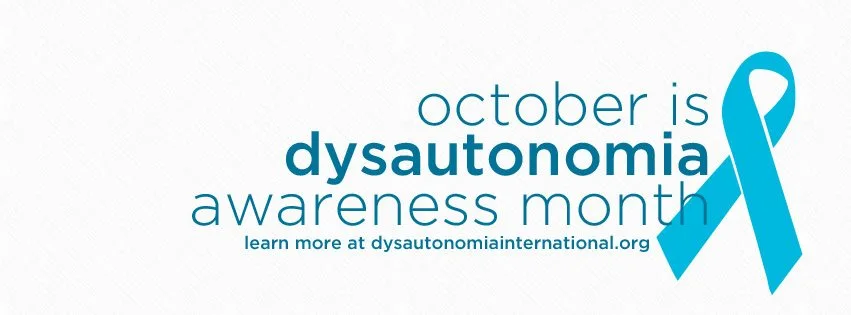Dysautonomia – One of the most common illnesses you NEVER heard of.
Dysautonomia is an umbrella term used to describe several different medical conditions that cause a malfunction of the Autonomic Nervous System. If you remember your biology, the Autonomic Nervous System controls the “automatic” functions of the body that we do not consciously think about. For example, heart rate, blood pressure, digestion, dilation and constriction of the pupils of the eye, kidney function, circulation and temperature control.
Dysautonomia is not rare.
Over 70 million people worldwide live with various forms. People who have dysautonomia have trouble regulating these systems, which can result in lightheadedness, fainting, unstable blood pressure, abnormal heart rates, malnutrition, and in severe cases, death.
People of any age, gender or race can be impacted. At this time, there is no cure. With many Covid patients now complaining of many autonomic nervous system dysfunctions, there is hope that there will be more research done to help those who suffer. Even with the high prevalence of dysautonomia, it took most patients years to get diagnosed due to a lack of awareness amongst the public and the medical profession. That is changing, and we are hopeful more doctors will begin treating and diagnosing patients with a form of autonomic nervous system dysfunction.
Here are some facts about Dysautonomia
-
- It is pronounced dis’-oughta-know’-me-uh.
- Dysautonomia is a group of neurological conditions that impact over 70 million people around the world.
- It means “dysfunction” of the “autonomic nervous system.” The autonomic nervous system controls all of your involuntary bodily functions like your heart rate, breathing, maintaining proper blood pressure, digestion, sleep cycles, body temperature control, sweating and more.
- There are many different types, including, but not limited to, neuro-cardiogenic syncope, postural orthostatic tachycardia syndrome, inappropriate sinus tachycardia, orthostatic hypotension, autoimmune autonomic ganglionopathy, pure autonomic failure, and multiple system atrophy.
- It can also occur secondary to other diseases. Diseases that commonly cause autonomic nervous system dysfunction include all types of diabetes, Sjögren’s syndrome, celiac disease, multiple sclerosis, and Parkinson’s.
- Due to the malfunctioning of the autonomic nervous system in people with dysautonomia, symptoms can include tachycardia (a heart rate that is too fast) or bradycardia (a heart rate that is too slow). Poor blood flow to the heart, brain and other organs. Chest pains, lightheadedness, fainting, nausea, even a gastrointestinal tract that moves too fast or too slow. Blood pooling in the extremities, shaking, too much or too little sweating. Cognitive impairments (“brain fog”), headaches, and much more.
- Dysautonomia comes with a wide range of disability – from mild, to very disabling, to death in rare cases. While some patients can continue with work, school and social activities, many cannot, even with the best treatment currently available.
- Some dysautonomia patients will get better over time, by either learning to manage their symptoms better, or by actually recovering from the illness. However, some remain sick with dysautonomia indefinitely, and some progressively get worse.
- Many dysautonomia patients experience years of diagnostic delay, and have difficulty finding physicians to treat their dysautonomia once they are diagnosed, because most doctors have not received training on how to diagnose and treat autonomic nervous system disorders.
- Dysautonomia International is the leading non-profit that advocates for individuals living with
dysautonomia through research. Learn more here – www.dysautonomiainternational.com
Many people know that October is the PINK Month of Breast Cancer Awareness. Our hope is that October will also be know as Turquoise, for the awareness of Dysautonomia.


